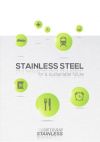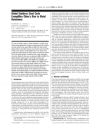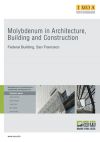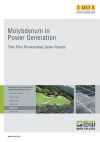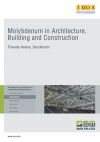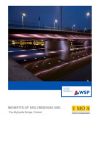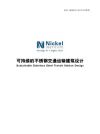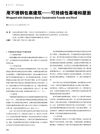Stainless steel is 100-percent recyclable with no down-cycling, regardless of how many times it is recycled. Stainless steel producers use as much recycled content as possible. In 2002, the International Stainless Steel Forum (ISSF) estimated typical recycled content of stainless steels at about 60%. The Specialty Steel Industry of North America (SSINA) issued a Fact Sheet stating that 300 series stainless steels produced in North America, like Type 316, have a post-consumer recycled content of 75 to 85%. Some stainless steel producers report as much as 90% recycled content for their most common stainless steels
Researchers at the Center for Industrial Ecology at Yale University in New Haven, CT and the National Institute for Environmental Studies in Tsukuba, Japan, have examined the international life cycle of stainless steel in depth, including typical service life and end-of-life (EOL) recapture rates by application. In the building and infrastructure segment, they estimated that 92% of stainless steel is collected for recycling at the end of life. Their article published in Environmental Science & Technology provides details on this and other end-use markets.
Global Stainless Steel Cycle Exemplifies China's Rise to Metal Dominance
As the table below demonstrates, this makes stainless steel one of the most environmentally friendly metals available for construction.
Typical Recycled Content and End-of-Life Collection Ratio
| Metal Product | Recycled Content (%) | EOL Collection Ratio (%) |
|---|
| Carbon Steel |
|---|
| Integrated mills |
25-35 |
70 (sheet/strip) |
| Mini mills |
90 |
98 (beams, plate) |
| Stainless Steel |
70 - 90* |
92 |
|---|
| Zinc |
23 |
33 |
|---|
| Copper |
|---|
| Electrical wire |
0 |
>90 |
| Other products |
70 - 95 |
>90 |
| Aluminium (11) |
|---|
| Sheet |
0 |
70 |
| Extrusions |
varies |
70 |
| Castings |
≤100 |
70 |
* 70% is the global average. Some producers report as much as 90%.
Table references:
“Comparing the Sustainability of Architectural Metals,” Catherine Houska and Dr. Steven Young, The Construction Specifier, July 2006, pgs. 80 – 90.
"Global Stainless Steel Cycle Exemplifies China's Rise to Metal Dominance," Environmental Science & Technology.
Molybdenum-containing stainless steel conserves natural resources in many ways. It does not contribute to landfill waste or require frequent replacement. It is possible to use thinner stainless steel panels, and reduce heat gain and air-conditioning costs through good design. Furthermore, stainless steel does not require coating to prevent corrosion, eliminating the release of volatile organic compounds (VOCs) and associated toxic run-off. Stainless steel products are an excellent choice to protect the environment and create comfortable, attractive structures. Go to the worldstainless site to learn more about this remarkable material.
See also:
Sustainable Stainless Steel Architecture (Nickel Institute)
North American LEED Fact Sheet
International Stainless Steel Recycling Information
Team Stainless Stainless steel videos

